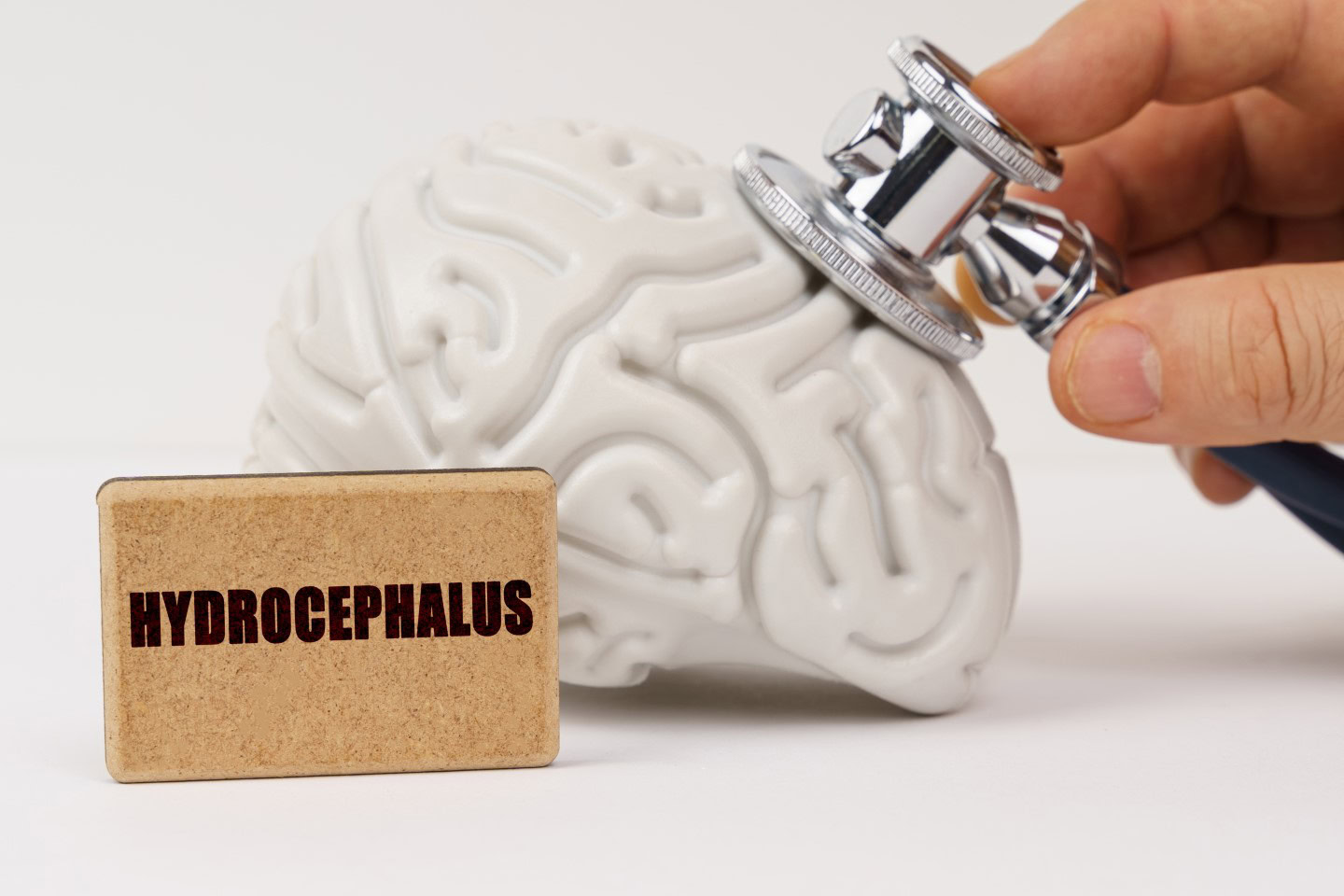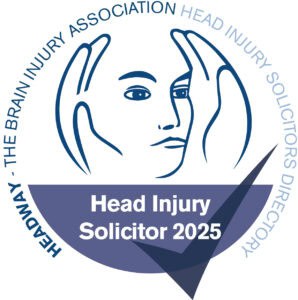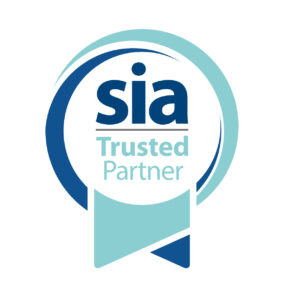
Understanding hydrocephalus in children: why early diagnosis and treatment matter
This week (10 – 16 March, 2025) is Hydrocephalus Awareness Week, a time to show support for families affected by this condition and raise awareness about the importance of early diagnosis and treatment.
As a solicitor in the Child Brain Injury team at Bolt Burdon Kemp, I know when hydrocephalus is not recognised and treated promptly the consequences can be devastating, causing permanent brain damage and leading to lifelong challenges for the child and their family.
What is hydrocephalus?
Hydrocephalus, sometimes called “water on the brain” happens when too much cerebrospinal fluid (CSF) builds up in the brain’s cavities (ventricles).
Normally, CSF cushions the brain and spinal cord while also removing waste, but when it doesn’t drain properly, pressure increases inside the skull, damaging brain tissue if not treated quickly.
Types of hydrocephalus in children
There are two types of hydrocephalus affecting children.
Congenital hydrocephalus is present at birth and can be due to inherited health conditions or events during foetal development such as:
- Spina bifida: a condition where the spinal cord doesn’t form properly;
- Infections during pregnancy: such as rubella or cytomegalovirus;
- Brain bleed: bleeding into the brain’s ventricles (Intraventricular haemorrhage);
- Arachnoid cysts: fluid-filled sacs between the brain or spinal cord and the arachnoid membrane (a protective membrane covering the brain and spinal cord).
Acquired hydrocephalus develops after a child is born and is generally the result of an injury or illness, such as:
- Subarachnoid haemorrhage: bleeding between the brain and the arachnoid membrane covering it;
- Stroke: when blood stops flowing to a part of the brain (ischaemic stroke) or there is a bleeding inside the brain (haemorrhagic stroke, intraventricular haemorrhage);
- Brain tumours or cysts: these can block the flow of CSF;
- Meningitis: an infection of the membranes surrounding the brain and spinal cord;
- Head injury.
Signs and symptoms of hydrocephalus in children
Hydrocephalus can be tricky to diagnose because its symptoms overlap with other conditions. The signs vary depending on the child’s age.
In newborn babies and infants, signs may include:
- An unusually large head;
- A bulging fontanelle (the soft spot on top of the baby’s head);
- Unusually fast head growth;
- Downward looking eyes (known as sunsetting);
- Vomiting;
- Irritability;
- Sleepiness or low energy;
- Seizures, muscle stiffness or spasms;
- Difficulty feeding.
In toddlers and older children, signs and symptoms might include:
- Headaches;
- Neck pain;
- Unusual eye movements;
- Enlarged head;
- Feeling/being sick or loss of appetite;
- Problems with walking, balance and coordination;
- Blurred or double vision;
- Sleepiness, which can progress to coma;
- Memory loss;
- Personality or mood changes, such as irritability or confusion;
- Seizures;
- Loss of bladder control or urinating often.
Why early diagnosis and treatment are crucial
Whilst there is currently no known way to prevent or cure hydrocephalus, the sooner hydrocephalus is diagnosed, the better the chances of preventing long-term brain damage.
Congenital hydrocephalus is often detected before birth during a routine ultrasound scan. Acquired hydrocephalus is diagnosed using brain scans such as CT, MRI, or ultrasound.
Treatment usually involves surgery to insert a shunt – a thin tube – to drain excess fluid from the brain to relieve pressure. Some children may have an endoscopic third ventriculostomy (ETV) instead. This is a procedure to create a new pathway for fluid drainage if the fluid buildup is due a blockage. Draining excess CSF from the brain reduces pressure inside the skull, relieves the symptoms associated with hydrocephalus and lowers the risk of irreversible brain damage.
Advances in diagnostic imaging, improved neonatal intensive care, swift intervention and modern neurosurgical techniques offer opportunities to improve the outlook for many babies and children with hydrocephalus. But when healthcare professionals fail to recognise symptoms, delay treatment or mismanage care, the baby or child may suffer serious harm, which could have been avoided.
How poor medical care related to hydrocephalus can lead to harm
Here are some examples of ways poor medical care related to hydrocephalus can lead to avoidable harm.
- Failure to detect congenital hydrocephalus during pregnancy: A routine prenatal ultrasound may show signs of hydrocephalus, such as enlarged brain ventricles. If a sonographer or doctor misses these signs, parents may not be prepared, and the baby may not receive early intervention.
- Failure to recognise symptoms in newborns: If a baby has a bulging soft spot, rapid head growth, or difficulty feeding, doctors should investigate hydrocephalus. Failing to investigate can lead to a delayed diagnosis resulting in permanent brain damage.
- Misdiagnosing hydrocephalus as another condition: Symptoms like vomiting, irritability, or headaches may be mistaken for colic, reflux, or migraines. A failure to conduct brain scans (such as an ultrasound, MRI, or CT scan) can delay lifesaving treatment.
- Failure to diagnose acquired hydrocephalus after a brain injury or infection: Children who suffer a brain haemorrhage, stroke, meningitis, or head trauma are at higher risk of hydrocephalus. If doctors don’t monitor them properly, fluid buildup may go unnoticed until it causes serious damage.
- Delaying urgent treatment – If hydrocephalus is diagnosed but treatment (such as shunt surgery or an ETV) is delayed without good reason, the increased brain pressure can cause irreversible injury.
- Surgical errors during shunt placement or ETV – Mistakes made during surgery, such as placing the shunt incorrectly or failing to check the ETV is working, can lead to complications.
- Failure to monitor for shunt failure or infection – Shunts can become blocked or infected, leading to life-threatening complications. If a child has symptoms like vomiting, drowsiness, or seizures and doctors fail to check for shunt malfunction, this may be negligent.
- Misdiagnosing or ignoring shunt complications – If a child is taken to hospital with symptoms of a blocked or infected shunt but is sent home without proper tests, their condition may worsen significantly before getting the help they need.
- Failure to provide follow-up care – Children with hydrocephalus need regular check-ups to monitor their condition. If a hospital or doctor fails to schedule or perform necessary follow-ups, serious complications may go undetected.
The consequences of medical negligence
When hydrocephalus is not diagnosed or treated properly, a baby or a child can suffer:
- Permanent brain damage;
- Epilepsy and seizures;
- Physical disabilities and coordination problems;
- Vision loss
- Lifelong learning difficulties;
- Speech and language delays;
- Memory and organisational difficulties.
How we can help
If you believe your child’s hydrocephalus was misdiagnosed, left untreated or managed poorly, you may be entitled to claim compensation for medical negligence on their behalf. This can help cover specialist care, therapy, equipment and education support to give your child the best possible future.
At Bolt Burdon Kemp, our specialist child brain injury solicitors can investigate your child’s case and guide you through the legal process. Contact us for a free, confidential chat to discuss your concerns.








